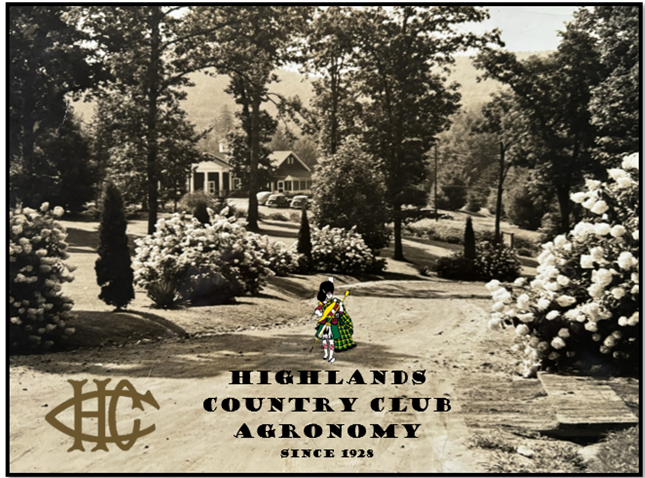Small dead spots like the one above become evident this time of year.
Across the entire golf course, it is inevitable that you'll see the occasional "dead spot" during this time of year. So what are they and what causes it? Great question!
The short answer to the question is wilt. Wilt occurs when there is no more plant available water in the rootzone, which triggers the grass to go into dormancy so it can conserve its resources. Why there are tiny areas here and there that are affected more than other areas is a bit more complicated to answer, but I'm going to try. If you're laying in bed, trying to fall asleep, now is the perfect time to dim the lights because from this point on, sleep will come sooner rather than later.
First off, our native soil fairways are comprised of different types of soil that have varying capacity to hold onto water. There are other areas where a drain line, comprised of straight sand can cause grass to wilt on hot summer day, but 6" away from it, in the native clay soil, the grass is jut fine. When you see my team out dragging hoses in the afternoon, this is exactly what we are fighting- localized dry spots (LDS). Localized dry spotting is a term that describes soil that becomes hydrophobic; it repels water, and the grass turns brown. Immediately below is a USGA piece on the very subject. Under the photo, you'll see a "CLICK HERE" link to take you to the article.
For an explanation on LDS, check out this link: CLICK HERE!
We fight localized dry spots through the use of wetting agents. Wetting agents are liquid products that are applied to the turf (via spray); watered into the soil after application where they coat the individual soil particles to ease the movement of water through the profile. Like everything in life, no one product will offer 100% success. Of course, we'd love to not have any of this and there is one solution, and that's to over water on a preventative basis, which isn't something we are going to do.
Another way to alleviate this issue is through aerification. By poking a lot of little holes, we are creating more surface area where water can enter the soil. Soils become hydrophobic over time and this is one of the reasons you don't see LDS in the spring. The fresh aeration holes are still making it easy for water to move into the soil. When we get to August, the turf is very dense and those aeration holes and large pore spaces they created are a thing of the past. The fact that we do all our aeration in the off-season, means we need to ride it out a couple more months doing the best we can. You may see us out with our walk- behind aerator doing some small areas here and there and this is the reason for that.
Hopefully this gives you a little more insight into a subject that you'll see on the golf course.



